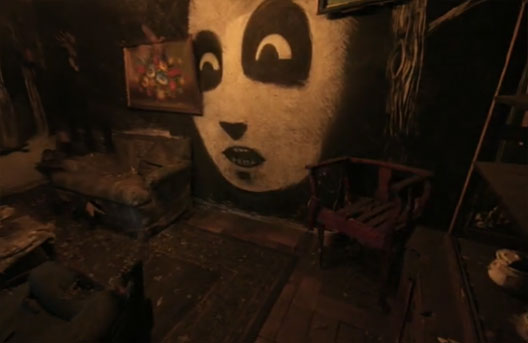Stop-motion (also known as stop-action or frame-by-frame) is an animation technique to make a physically manipulated object appear to move on its own. The object is moved in small increments between individually photographed frames, creating the illusion of movement when the series of frames is played as a continuous sequence. Clay figures are often used in stop-motion for their ease of repositioning. Stop-motion animation using clay is described as clay animation or clay-mation.
A few of the best ART-PIE have seen are below.
Hours and hours of work here for these two first examples. Top quality.
Warning: these two films contain some adult language in the subtitles, but if you can stand the occasional and brief “F” word, the pay off is huge.
Other pretty cool Stop Motion wonders from Tobias Stretch here
Variations of stop-motion
[] Stereoscopic stop-motion
Stop-motion has very rarely been shot in stereoscopic 3D throughout film history. The first 3-D stop-motion short was In Tune With Tomorrow(also known as Motor Rhythm) in 1939 by John Norling. The second stereoscopic stop-motion release was The Adventures of Sam Space in 1955 by Paul Sprunck. The third and latest stop-motion short in stereo 3-D was The Incredible Invasion of the 20,000 Giant Robots from Outer Space in 2000 by Elmer Kaan[1] and Alexander Lentjes.[2][3] This is also the first ever 3-D stereoscopic stop-motion and CGI short in the history of film.
The first all stop-motion 3-D feature is Coraline (2009), based on Neil Gaiman’s best-selling novel and directed by Henry Selick. The film is produced by Nike shoe founder Phil Knight’s Laika animation studio in Portland, Oregon, formerly Will Vinton’s claymation studio.
[] Go motion
Another more-complicated variation on stop-motion is go motion, co-developed by Phil Tippett and first used on the films The Empire Strikes Back (1980), Dragonslayer (1981), and the Robocop films.
Go motion involved programming a computer to move parts of a model slightly during each exposure of each frame of film, combined with traditional hand manipulation of the model in between frames, to produce a more realistic motion blurring effect. Tippett also used the process extensively in his 1983 short film Prehistoric Beast, a 12 minute long sequence depicting two dinosaurs: one, herbivorous, being chased by the other one, carnivorous. With new footage Prehistoric Beast became Dinosaur! in 1985, a full length dinosaurs documentary hosted by Christopher Reeve. Those Phil Tippett’s go motion tests acted as motion models for his first photo-realistic use of computers to depict dinosaurs in Jurassic Park in 1993. A lo-tech, manual version of this blurring technique was originally pioneered by Wladyslaw Starewicz in the silent era, and was used in his feature film The Tale of the Fox (1931).
[] Computer generated imagery
The almost universal use of CGI (computer generated imagery) has effectively rendered stop-motion obsolete as a serious special effects tool in feature film. However, its low entry price, and still unique “look” and “feel” on film means stop-motion is still used on some projects such as in children’s programming, as well as in commercials and comic shows such as Robot Chicken. The argument that the textures achieved with CGI cannot match the way real textures are captured by stop-motion also makes it valuable for a handful of movie makers, notably Tim Burton, whose puppet-animated film Corpse Bride was released in 2005.

